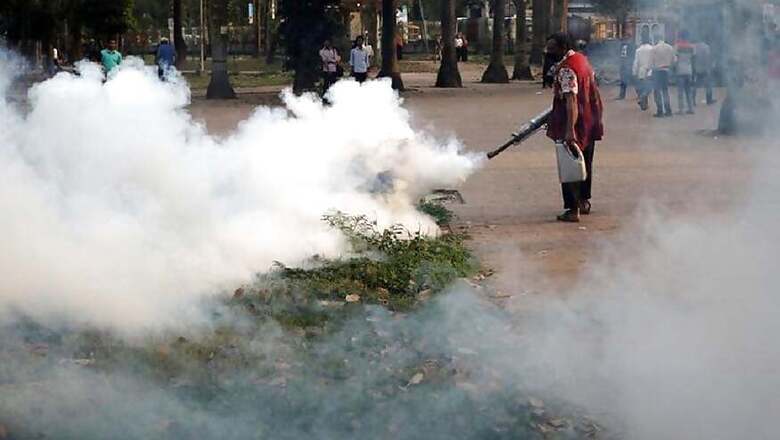
views
The Brihanmumbai Municipal Corporation’s (BMC) efforts to keep mosquito-borne diseases under control seem to be paying off as cases of dengue and dengue-like illness have seen a dip this monsoon compared to the previous year.
Compared to last year’s 153 confirmed cases of dengue in August, the recent monsoon report released by Brihanmumbai Municipal Corporation's public health department shows that around 134 such cases were reported in the month this year.
"People with illnesses such as diabetes, hypertension, heart disease, kidney failure, lung disorders, immunocompromised patients should seek the help of physician immediately at the onset of fever. Do not let water stagnate inside your house and in your building and locality. People should use mosquito repellents and avoid street food made at unhygienic surroundings," DNA quoted Dr Abhishek Subhash, Internal Medicine, Tardeo Bhatia Hospital, as saying.
Since the onset of monsoon from June to August this year, the BMC has reported 163 dengue cases and 3594 dengue-like illness cases. Last year, the number of confirmed dengue cases during this period stood at 233 cases while dengue-like illness cases were reported to be 4,455.
A health officer from epidemiology cell of the BMC's public health department, said, "With an aim to prevent dengue and malaria, mosquito breeding spots should be in control and a proper system for the water to flow and not get stagnant be made. Usually, the dengue and malaria case rise during the end of the monsoon season as the climate changes."
Earlier this month, the BMC had stated that there had been a dip in malaria cases in the first ten days of August compared to last year.
While 259 malaria cases were reported from August 1 to 11 this year, the last year’s figure during the same period stood at 853.
“Activities like daily disease surveillance, early diagnosis and treatment, implementation of immediate control measures, IEC activities, prompt analysis of reports and management guidelines by EPID department etc, are contributing factors for the reduction of cases,” an unnamed health official quoted by Free Press Journal had said.

















Comments
0 comment